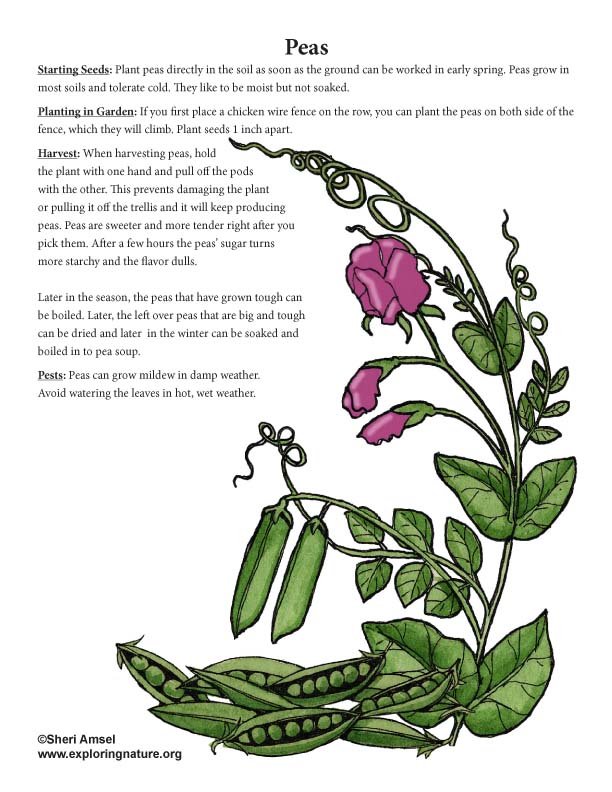

Starting Seeds: Plant peas directly in the soil as soon as the ground can be worked in early spring. Peas grow in most soils and tolerate cold. They like to be moist but not soaked.
Planting in Garden: If you first place a chicken wire fence on the row, you can plant the peas on both side of the fence, which they will climb. Plant seeds 1 inch apart.
Harvest: When harvesting peas, hold the plant with one hand and pull off the pods with the other. This prevents damaging the plant or pulling it off the trellis and it will keep producing peas. Peas are sweeter and more tender right after you pick them. After a few hours the peas’ sugar turns more starchy and the flavor dulls. Later in the season, the peas that have grown tough can be boiled. Later, the left over peas that are big andtough can be dried and later in the winter can be soaked and boiled in to pea soup.
Pests and Disease: Peas can grow mildew in damp weather. Avoid watering the leaves in hot, wet weather.

